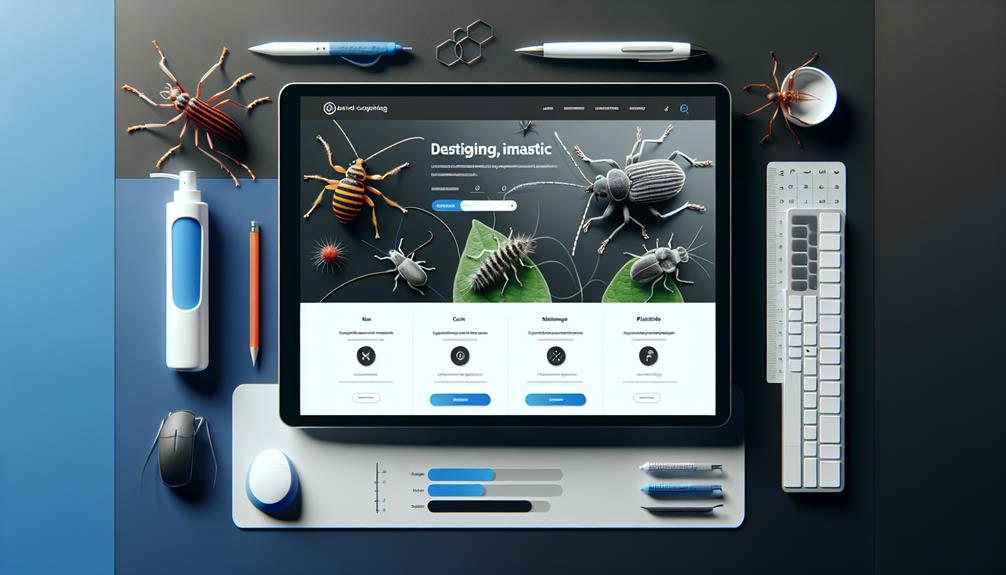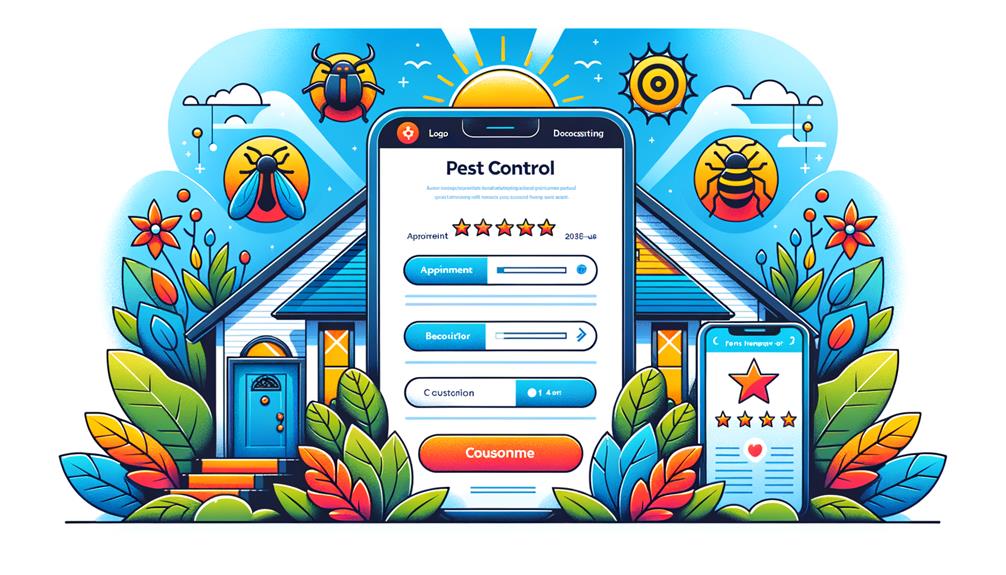Imagine your website is a well-maintained and pest-free home, attracting potential customers with its inviting ambiance.
However, without proper enhancements, your online presence might resemble a neglected and infested space, leaving visitors scurrying away.
To ensure your website is a haven for both users and search engines, it’s crucial to implement a few key tips.
In this discussion, we will explore four essential strategies that can elevate your pest control company’s website, making it a compelling destination for customers seeking your expertise and services.
Table of Contents
ToggleKey Takeaways
- Categorize website content into logical sections and sub-sections for easy navigation
- Incorporate keywords strategically in website content to improve visibility and ranking
- Utilize high-quality images showcasing pest control services to capture attention and build trust
- Optimize website for seamless user experience on mobile devices to attract more organic traffic.
Clear and User-Friendly Navigation

Creating a clear and user-friendly navigation system on your pest control company’s website is essential for ensuring a seamless and enjoyable user experience. When it comes to sitemap organization, simplicity is key. Your customers should be able to easily find the information they need without feeling overwhelmed or confused.
Start by categorizing your website’s content into logical sections and sub-sections. This will help users quickly navigate to the specific information they’re looking for.
In addition to sitemap organization, intuitive menu options play a crucial role in enhancing user experience. Your menu should have clear and concise labels that accurately describe the content within each section. Avoid using generic labels like ‘Services’ or ‘Products’ – instead, be specific and use terms that your customers are familiar with.
For example, instead of ‘Services,’ consider using labels like ‘Residential Pest Control,’ ‘Commercial Pest Control,’ or ‘Termite Inspections.’ This will make it easier for your customers to navigate through your website and find the exact services they need.
Optimized and Relevant Content
To ensure that your pest control company’s website is effective in attracting and engaging potential customers, it’s crucial to focus on optimizing and delivering relevant content. Optimized and relevant content plays a significant role in improving your website’s visibility and ranking on search engine results pages (SERPs).
By conducting thorough keyword research, you can identify the specific terms and phrases potential customers are using when searching for pest control services. This information allows you to create content that strategically incorporates these keywords, increasing the chances of your website appearing in relevant search results.
When it comes to search engine optimization (SEO), high-quality and relevant content is key. Not only does it attract more visitors to your website, but it also keeps them engaged and encourages them to take action, such as contacting your company for a consultation or booking a service.
Your content should be informative, addressing common pest control concerns and providing valuable tips or advice. It should also be persuasive, emphasizing the benefits of choosing your services over competitors.
Engaging Visuals and Design Elements

How can you make your pest control website visually appealing and engaging for potential customers? By incorporating interactive features and branding elements, you can create a website that not only captures the attention of your audience but also evokes an emotional response. Here are three ways to achieve this:
Interactive Features: Consider adding elements such as sliders, quizzes, or interactive maps that allow visitors to actively engage with your website. These features not only make your website more visually appealing but also provide a unique and memorable user experience.
Branding Elements: Use your brand’s colors, fonts, and logo consistently throughout your website. This creates a cohesive and professional look, enhancing your brand identity and making your website instantly recognizable.
High-Quality Images: Use high-resolution images that showcase your pest control services and the results you’ve achieved for your customers. By visually demonstrating the effectiveness of your services, you can build trust and credibility with potential customers.
Mobile-Friendly and Responsive Layout
Mobile-friendly and responsive layout is essential for a pest control website to ensure a seamless user experience across different devices. In today’s digital age, people are increasingly using their smartphones and tablets to browse the internet. If your website isn’t optimized for mobile devices, you risk losing potential customers.
Mobile optimization isn’t just about making your website fit on a smaller screen. It’s about creating a user-friendly experience that allows visitors to easily navigate and access information on your site. A responsive layout ensures that your website adapts to different screen sizes and resolutions, providing a consistent and visually appealing experience across all devices.
Not only does a mobile-friendly website improve user experience, but it also plays a crucial role in your SEO strategies. Search engines like Google prioritize mobile-friendly websites in their search results, making it easier for potential customers to find you. By having a responsive layout, you increase your chances of ranking higher in search engine results pages, driving more organic traffic to your site.
Investing in a mobile-friendly and responsive layout is a smart business move for pest control companies. It not only enhances the user experience but also helps improve your visibility online. So, if you want to stay ahead of the competition and attract more customers, make sure your website is mobile-friendly and responsive.





